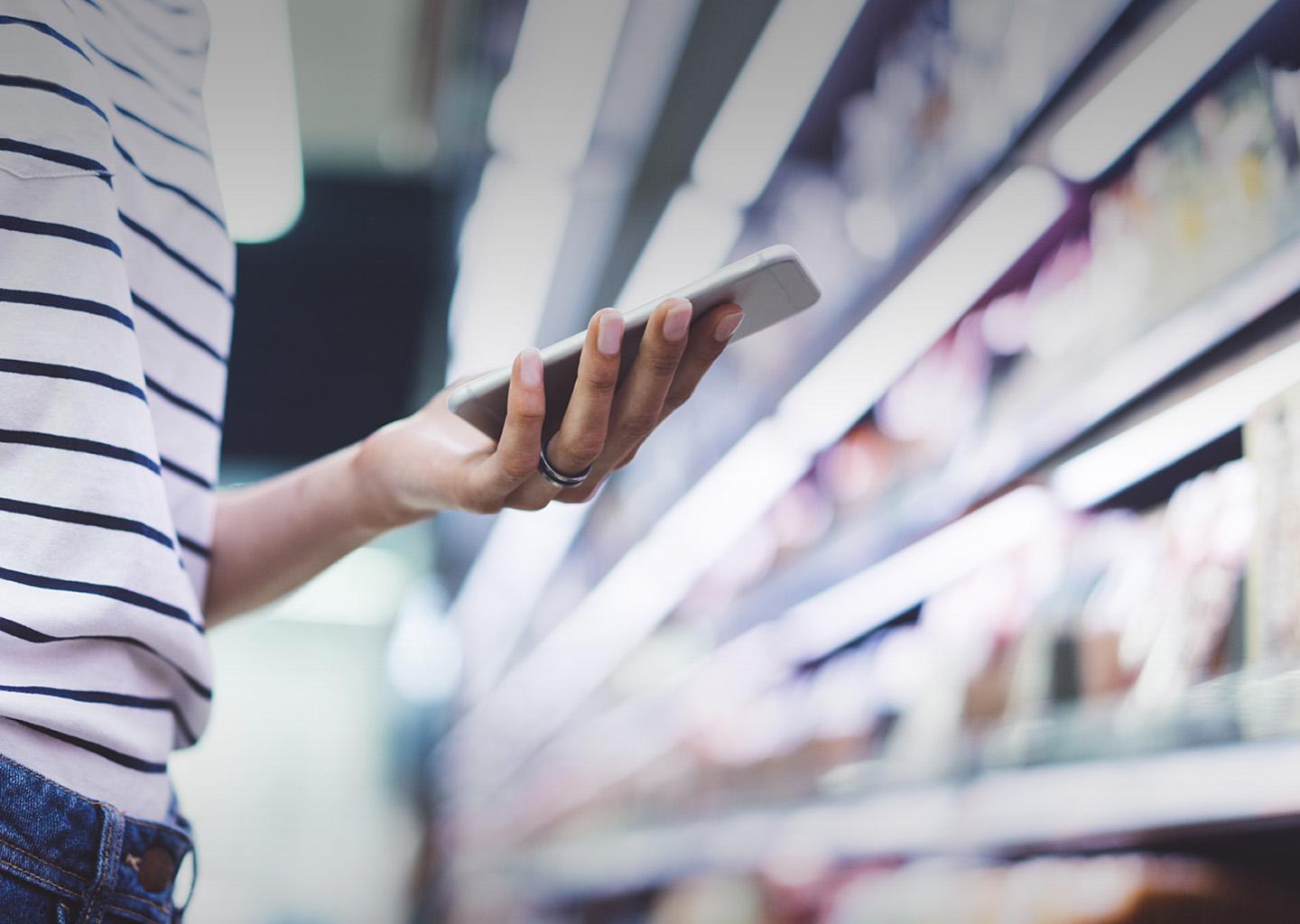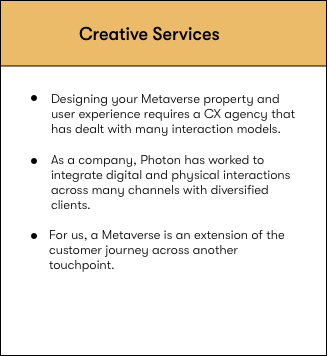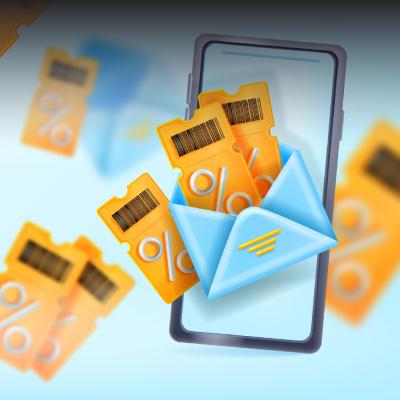Digital disruption impacts every aspect of business—from communicating with your customers to reinventing business models, to creating new products or entering new markets. Today 89% of enterprises intend to adopt or have already adopted a digital-first business strategy in order to truly transform their business. The drivers of digital growth have undergone a rapid and massive transformation where disruptors have created new business models based on an agile operating structure that successfully engages in a larger ecosystem by unlocking new sources of value.
Transforming CPG companies in the digital era
With a new level of branding, merchandising and marketing approach—and continuous evolution of hyper-personalized customer experiences—traditional CPG brands have lost ground to the faster moving competitive world. This new market reality, the emergence of market expectations and the growing impact of online shopping have compelled forward-thinking CPG brands to embark on a digital business transformation that touches most of their operating models. This shift is happening at lightning fast speed, far more quickly than predicted.
In a recent move to boost its eCommerce sales and challenge Amazon, Walmart rolled out an ambitious new program, “Pickup Discount,” reducing the price of products that consumers purchase online and retrieve at its stores. The first example of Marc Lore’s influence in Walmart and bringing new shopping concepts adapted and tested at Jet.com. Also, Walmart went on to acquire men’s retailer Bonobos just as Amazon announced its purchase of Whole Foods.
With CPG companies increasingly moving to digital shelves, the old business models have become obsolete. Becoming digitally native has developed into an urgent need for every CPG player. As a result, the CPG industry is left with no other option but to adopt digital at the core of their business or lose their market leadership in the digital age.
In the United States alone, between 2011 and 2015, $18 billion in market share shifted away from large CPG companies to smaller players. And in 2015, 90% of the top 100 CPG brands lost market share, with 62 of these experiencing declining sales. Also,
- By the end of 2018, online sales of CPG products will increase by 350% to $36 billion
- 49% of US consumers shop for consumer packaged goods online
- 84% of millennials use their smartphones for shopping in-store
- Brands that provide personalized offerings enjoy a 50% higher degree of customer loyalty, which translates into higher sales
Digital Shift: From consumers to connected consumers
The proliferation of web, mobile apps, and social media are empowering consumers to discover, research, purchase, share feedback and influence others more rapidly. This has created a consumer-to-consumer marketplace where commerce is more democratized and has given rise to a new breed of consumers who are increasingly connecting to the internet via more devices and other things. Connected consumers today have the power to
- Purchase products and services from anywhere and anytime and select the mode of delivery which best suits their interest and choice
- Facilitate content-to-commerce by turning their smartphones to look for product information, compare prices or get help while shopping in-store
- Share personalized services such as home delivery or order picking or pick up services
The result has powered an omnichannel market environment where customer experiences are being tailored to reflect the significance of a smart and connected world— where data has become a valuable asset to target right customers at right time.
From traditional to digital native
Traditional CPG giants are under attack by a new breed of digitally native, vertically-integrated startups such as Harry’s, Ritual, Ipsy, Brandless, Quip, Hubble, and MyLola. Over the past few years, new digital technologies, online shopping, and increasing channel fragmentation have intensified the pressure on CPG brands.
The recent Walmart-Flipkart acquisition represents a very important change in the global business model where customer value propositions are slowly shifting from the physical product (offline) to the digitally-delivered solution or experience (online). The hallmark of this shift is the integration of a digital services layer on top of a physical product delivery. This means combining offline and online delivery models to deliver hyper-personalized customer experiences across multiple digital channels. In order to stay relevant in the digital world, CPG companies are restructuring their operations to meet changing consumer demands.
- This is driving enterprises from across the world to adopt digital solutions to serve existing consumers as well as entering new markets. An example of business models born of customer expectation and emerging technology is beauty-leader L’Oréal, which offers Lancôme’s Le Teint Particulier Custom Made Foundation (customized foundation based on individual’s skin tone) as a way to revitalize a traditional beauty brand.
- Digital native companies go directly to customers and solve problems through digital means. This isn’t easy to build in a traditional company and therefore traditional large CPG conglomerates are acquiring digitally native companies to meet ever-changing requirements of their consumers. For example, Unilever, in an effort to capitalize and bring new expertise into their organization acquired Dollar Shave Club for $1 billion.
Let us explore how CPG companies are using new digital technologies and adapting digital-first business strategies to drive supply chain efficiencies, product innovation, and customer satisfaction
Using big data and analytics to digitize CPG supply chain
CPG companies have already made significant progress in improving their operating models by transforming their supply chain process efficiencies and building out intelligent business platforms. This can be successfully achieved if CPG companies use Big Data & Analytics, Intelligent manufacturing, and Machine Learning capabilities to digitally transform their supply chains and delivery management systems. The value that Big Data brings to the CPG supply chain include
- Delivering real-time, highly-personalized promotions, offers, and campaigns
- Analyzing shoppers via omnichannel engagement and social media sentiment
- Creating next-gen recommendation engines for dynamic product offerings & delivery options
- Optimize merchandising via real-time analysis of demand and stock
- Embedding insights by using Big Data to analyze the abundance of data available on individual consumer behavior, purchase history and segmentation
- Identifying new delivery options to the consumers that offers them the choices while motivating them with incentives to choose the most cost-efficient and profitable delivery option for the suppliers—Real Omnichannel Powered Delivery Capability
Smart and intelligent packaging
Manufacturers have started using digital technologies to provide enhanced customer experiences—where packaging is now transformed into the smart packaging. Smart packaging provides the functionality to communicate product information such as raw materials, supply chain processes and more. Products themselves are using digital technologies to interact with their customers, pre- and post-purchase.
Today, products are not just products to be consumed and then discarded; they are valuable sources of data providing information on consumer behavior. A great example is from Diageo, a multinational alcoholic beverages company that partnered with a leading electronics brand to develop a smart bottle. The company uses electronic sensors—with Near Field Communication (NFC) capabilities—to know when a user opens and closes the bottle, thereby generating valuable information on user behavior. The data generated through smart bottles enables the CPG manufacturer to track the product through the supply chain, know exactly when the consumer may need the product replenished or fixed, and signal the best time to cross-sell or upsell.
The future of CPG industry: Integrating a digital-first business strategy
With Photon’s Digital-first business strategy, CPG companies can engage their customers in an efficient and effective manner, ensuring consistent hyper-personalized omnichannel experiences across digital touchpoints. Our digital framework for CPG companies has significant benefits, including
- Integrating a cloud-based intelligent enterprise model enables traditional CPG players to become more agile
- Adapting a modern omnichannel architecture serves one-to-one personalization to end users across customer channels
- Deploying an API and Microservices framework gives traditional CPG companies the ability to move and adapt to market conditions at the accelerated speed of digital
- Creating hyper-responsive engagement models helps to acquire and retain the next generation of customers
- Embracing automation helps deliver customer experiences with consistent, repeatable and scalable processes
- Utilizing the latest digital technologies—such as AI foundation, Cloud Migration, Mobile-First, IoT, and AR/ VR—embeds rich data to power new digital experiences
Once transformed, CPG companies can combine products with personalized services and new ways of delivery to introduce new disruptive business models and iterate at a faster pace than ever before. For CPG companies, this transformation will put data at the heart of every decision.
Connect with Photon to learn more about how CPG brands are using digital both on the front-end and within business transformation.















